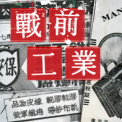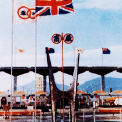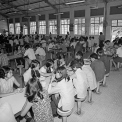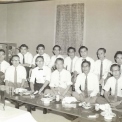What Hong Kong Plastic Industry Encompass
Plastic is a chemical polymer developed between the two world wars. Common plastics include soft and hard plastics, acrylic, polypropylene, PVC, etc. It can take the forms of powder, granules, films and sheets, etc. Plastic was first mainly used by the military. After the WWII it became widely used in civilian sectors. Plastic carries the attributes of bright and shiny, heat resistance, simple processing and recyclable. It is an industrial material that can replace rubber, metal, wood and glass.
Plastic industry can be divided into plastic refining, plastic production and plastic products production. These three main branches involve high temperature decomposition of plastic powder, plastic film and sheet production, and the production of common plastic products respectively. The first two involve a chemical process, thus the enterprises would usually carry “chemical” in their names. Plastic refining and plastic production are capital and machinery intensive industries. Local plastic industries are mainly product production. Common production methods are injection molding, blow molding, blister and extrusion, etc. Plastic materials are sent to an injection machine for molding, and operation is relatively simple.
The infancy of plastic industry in Hong Kong took place after WWII. Industrialists from mainland China were forced out because of civil war and a change of regime. They settled in Hong Kong and started plastic factories of different sizes. Their founders were from Shanghai, Guangzhou and Chaozhou. For example, China Plastic Company Ltd. and Kadar Holdings Co. Ltd were established between 1946 and 1947. Apart from that, some European and American enterprises started their representative offices in Hong Kong, and provided raw materials for the local factories. These companies included Imperial Chemical Industries, Monsanto Company and Dow Chemical Company.
The operation of large factories and cottage factories
Between the 1950s and 1960s, most of the plastic factories were running as small-scale cottage facilities. These cottage factories were found at tenement buildings in older neighborhoods or at ground floor shops. They occupied not more than a few hundred square feet, with a few hand-set pressing machines. Cottage factories were family-ran. There were no such concepts as personnel management, division of labour and training for workers. Owners of these cottage factories started their businesses young. Some of them were run as husband-and-wife partnership.
Cottage factories were started with a few thousand dollars. Since there was a limited running capital, the owners had to borrow money from money lenders, suppliers or peers to purchase raw materials, pay wages or to enlarge their facilities. Loan sharks were prevalent at that period of time. During the infancy of plastic industry, products had high profit margins so factory owners usually borrow money to get pass difficult times. Some gradually took the road to fortune. Factory owners were of lower qualifications and knowledge. Most of them did not speak English. Because of their small business scale and lack of dedicated sales department, they had to rely on import and export merchants to receive orders from overseas. This provided the opportunity for trading firms to control and manipulate product prices.
Larger plastic factories were mostly founded by entrepreneurs from Shanghai. In terms of capital, technology, human resources and sales, the larger factories had obvious advantage over the smaller ones. The larger companies had standard factories. With even more capital some could build multi-storey buildings equipped with offices The larger factories employed hundreds of workers. They had molding, production, finance and marketing departments. When a large factory could not cope with a big order, it would subcontract some production process to outside manpower from resettlement areas or those cottage factories.
Larger factories had dedicated sales or marketing departments with sales teams so they were less dependent on trading firms. Some even invited their overseas clients to Hong Kong for business dealing without asking the trading firms to act as middle men. Also, larger factories would participate in local or overseas exhibitions so as to liaison with international clients, which could also enhance the reputation of the company and its products.
The entrepreneurship of an industrialist
Most of the founders of plastic factories started their businesses from the scratch. Some of them came from trading firms and raw materials companies. Others were from a technical background with expertise in molding or machinery. How a factory was established and developed had a close relationship with the background of its founder.
Entrepreneurs with a commercial background were more alert to the market. They had the edge in terms of purchase of raw materials and getting orders, but more reliant on experts in the technical aspect of their businesses. Those with a technical background were better at product invention and innovation of machines. On the other hand they had a lesser control in purchase of raw materials and getting orders.
Many entrepreneurs started as workers. They believed that “fortune comes from hard work” so they had a hands-on approach toward their businesses. During day time they would go out trying to get orders. And at night back to their factories they would handle the production which might required them to work overnight. First generation factory owners seldom received higher education. With a lack of knowledge in corporate management, they ran their business in a traditional style management even when production grew in scale. From 1980s to 1990s, their second generation with better education took over the businesses and brought in more professional system of production, finance and manpower management.
Evolution of products and markets
There was a shortage of daily necessities after the war. Plastic industry in Hong Kong was at its infancy, and products were basic such as cups, pacifiers, toothbrushes, combs, photo frames and mahjong, etc. In mid-1950s, products became more diversified. Plastic toys and flowers became more popular. In early 1960s, a lot of factories turned to plastic flowers. After 1965, plastic toys took over and became the dominant products. Hong Kong became the “Kingdom of Plastic Toys”. Later the making of toys also incorporated other elements including metal, electronics and comics and animation. As a result, toy-making became independent from the plastic industry.
Hong Kong's plastic products were mostly for export. After the war until 1950s, Southeast Asia was the major market because of its large Chinese communities, plus the favorable factors of similarity in race and culture. In the late 1950s, quality of the products from Hong Kong gradually improved, and together with preferential tax provision from the Commonwealth, USA became the major export market for Hong Kong's plastic products, especially toys, after the 1960s.
Before 1970s, trading firms played an influential role in the plastic industry. Products had to go through export merchants, import companies, retailers and department stores, etc. During that time, exporters were commonly called trading firms, and those that covered Southeast Asian markets were called “Zhuang Kou”. They had offices in business districts such as Central and Tsim Sha Tsui. They received orders from foreign importers and retailers, and then placed the orders to local factories. Factories would sell the products to these trading firms and they would resell them to the companies who placed the orders to earn commission. After the 1970s, factories could also receive orders by themselves and became less reliant on trading firms.
Plastic factories were running in a relatively small scale, and their products were mostly daily goods. Those that were targeting local market paid more attention to building their brands and promotion. They took part at the Hong Kong Products Exhibition organised by the Chinese Manufacturers Association in Hong Kong to promote their companies.
OEM Production Model
At the end of 1960s, many US and European toys companies moved their production to Hong Kong, and worked with local factories according to original equipment manufacturing (OEM) agreements. For instance, local factories would produce products for multinational companies such as Hasbro and Mattel. OEM helped Hong Kong's toy industry to prosper. In 1972, Hong Kong became the largest exporter of toys in the world.
US and European companies had higher quality requirements towards their products. Foreign chain retailers also sent representatives to the factories to examine the products. To meet with their demands, OEM manufacturers had to improve their factories' environment so as to comply with the regulations of International Council of Toy Industries. They had to pay more attention to raw materials, inspection on products and packaging, ensure product safety, and even mindful of human rights issues such as not to employ child labour. With the advent of the OEM model, quality of local plastic industry improved.Brand name toys had higher value and brought higher profit for local manufacturers. After they undertook OEM orders, their business prospered.
The Rise of Plastic Chemical
Apart from injection molding and blow molding, local plastic factories also produced polyvinyl chloride (PVC). In the 1950s, factories started to import PVC from Japan and Taiwan to produce stationary, inflatable dolls, bags, wallets and buoys, etc by using high-frequency vibration machine. Yet cost of raw materials was high. Plastic materials production in Hong Kong was not popular, and Tin's Chemical was among the few local producers. Founder of Tin's Chemical Tin Ka Ping moved from Indonesia to Hong Kong in 1958. He started the company with a factory of 300,000 square feet at Tuen Mun's Castle Peak Bay. From 1960 onwards his company started to provide cheaper PVC film to local factories, which promoted the industry of PVC processing.
In the early 1960s, PVC production was at its starting stage. In 1962, Tin rented out space of his factory on Lai Chi Kwok Road to PVC processing plants with lower rent. Lower floors of the building were Tin's storage, so the PVC films could be easily transported to the processing plants that placed the orders. His company also provided low cost trading services. He had an office in Central to promote PVC products to foreign buyers. In terms of value and quantity, PVC products reached the peak in 1980s. During the 1990s, PVC industry declined as manufactures moved their plants to mainland China.
When foreign plastic manufacturers started to build their factories in Hong Kong, it signified the peak of local plastic industry. In 1976, Dow Chemical Company built its hard plastic factory in Tsing Yi, with an investment of US$32 million. During that time, Dow Chemical was the only hard plastic manufacturer in Hong Kong. The factory was equipped with polymerization reactors, monomer storage machines and PS granulators. With such expensive machines and high technological level, local industries were unable to compete.
Production line moving north
Hong Kong's plastic factories started moving to the mainland in 1980s. Pearl River Delta was a favorite location because of common language and culture. Businesses relied on processing on orders, processing with client's supplied design, assembling parts provided by clients and compensation trade. Production capacity increased after factories moved to the mainland. They could undertake larger orders which brought in bigger profits.
After moving the factories to the mainland, manufacturers kept their Hong Kong offices for functions such as orders receiving, accounting, logistics and storage facilities,etc. Thus, it formed the common practice of front offices in Hong Kong and productions in the mainland. During the early 1990s, manufacturers increased their investment in mainland and built bigger factories which also incorporated offices and quarters for workers. With larger production facilities and the increase in mainland workers' technical ability, the factories' auxiliary support also moved to the mainland.
The relocation of plastic materials factories to the mainland took place much later than plastic products factories. As the former were not labour intensive and relocation required much higher cost, manufacturers were more cautious about moving their plants to China. Tin's Chemical noticed that Taiwanese PVC manufacturers established their factories in China and posted great competition to Hong Kong. The company finally established its factories in Dongguan and Guangzhou in 1992 and 1999 respectively, and closed their productions in Hong Kong.
Manufacturers’ organizations and government supporting agencies of Plastic Industry
Most of the plastic factories in Hong Kong were only just started shortly after the war. Manufacturers had to use all their resources and time for production. They had very little spare time for meeting with their peers. At the end of the 1950s, since business was on track, there was a blossoming of associations with like-minded manufacturers. In 1957, Hong Kong Plastic Manufacturers Association and Hong Kong & Kowloon Plastic Products Merchants United Association Limited were established, while Chiu Chow Plastics Manufacturers Association was established in 1960. The three associations absorbed members based on their provincial ties and business scale. They took part in helping the government to propagate its regulations, organising industrial exhibitions and closing ties with fellow manufacturers. In 1959, Federation of Hong Kong Industries was established. It represented commercial and industrial sector to reflect their opinions to the government. The Federation also established Chow Sik-Nin Foundation for sending young people in the plastic industry abroad to gain more knowledge in machinery and raw materials. The Federation later also established Quality Control Centre and Sciences Management Association.
As for the Hong Kong Government, the Commerce and Industry Department was established in 1949 to provide trade referral services to facilitate the connection of foreign buyers with manufacturers in Hong Kong. During the 1960s, the government developed Kwun Tong and Kwai Tsung as industrial districts, provided cheaper space for small to medium sized factories. At the end of 1970s, industrial estates were built in Tai Po and Yuen Long. Hong Kong Trade Development Council was established in 1966 to assist manufacturers to develop international market. Hong Kong Productivity Council was established in 1967. Its aim was to provide technological expertise and training services to manufacturers. It also published professional periodicals such as Plastic Industry and Craft of Plastic Quarterly.
Reference
1.)Interview with Chan Wah Cheung, 28 Feb 2011.
2.)Interview with Lau Tik Wah, 24 Jan 2011.
3.)Interview with Tin Ka Ping and Tin Hing Sin, 9 and 16 Nov 2011.
4.)Interview with L.T Lam, 29 Sep, 19 Oct and 12 Nov, 2010
5.)Interview with Lai Kit Fong, 9 Aus, 15 Nov and 25 Nov, 2010.
6.)‘Plastics in Hong Kong’, Hong Kong Trade Bulletin, Hong Kong: Dept. of Commerce and Industry (November 1954), p.9-11.
7.)‘Hong Kong's Artificial Flower Industry’, Hong Kong Trade Bulletin, Hong Kong: Dept. of Commerce and Industry (January 1957), p.8-9.
8.)‘Toys, Dolls and Games’, Hong Kong Trade Bulletin, Hong Kong: Dept. of Commerce and Industry (November 1959), p.308-311.
9.)‘Plastics in the Home’, Hong Kong Trade Bulletin, Hong Kong: Dept. of Commerce and Industry (March 1960), p.85.
10.)‘Some Recent Developments in the Plastic Flower Industry’, Hong Kong Trade Bulletin, Hong Kong: Dept. of Commerce and Industry (May 1961), p.198-199. 11.)‘Hong Kong Raincoats’, Hong Kong Trade Bulletin, Hong Kong: Dept. of Commerce and Industry (February 1962), p.62-63.
12.)‘The Flowers that bloom……’, Hong Kong Trade Bulletin, Hong Kong: Dept. of Commerce and Industry (July 1962), p.308-309.
13.)Han-chow Chieng, Hong Kong Plastics, Hong Kong: Wah Sun Hong Ltd., 1984
14.)Ma, Pik-hei, Lillian Cecilia,.The plastics industry in Hong Kong, Undergraduate essay, Dept. of Geography & Geology, University of Hong Kong, 1958.
15.)Lei Kwok Kit, The Plastics Industry of Hong Kong, Undergraduate essay, Dept. of Geography & Geology, University of Hong Kong, 1963.
16. Chu Chi King Maria Goretti, Plastics Industry In Hong Kong, Undergraduate essay, Dept. of Geography & Geology, University of Hong Kong, 1966.
17.)梁知行,「一九六五年塑膠業概況」,《香港塑膠》(第五卷,第三期,1966年3月1日),香港: 香港塑膠業廠商會,頁1-3。
18.)梁知行,「一年來塑膠工業之回顧與前瞻」,《香港塑膠》(第十四卷,第一期,1975年1月),香港: 香港塑膠業廠商會,頁1-3。
19.)楊仕權,「工業訓練教育的建基問題」,《香港塑膠》(第五卷,第六期,1966年6月1日),香港: 香港塑膠業廠商會,頁1。
20.)唐有洪,「塑膠業海外貿易」,《香港塑膠》(第十四卷,第一期,1975年1月),香港: 香港塑膠業廠商會,頁3-4。
21.)「本港成為玩具出口中心,產品出口數額逐年上升」,《香港塑膠》(第十六卷,第十一期,1977年11月),香港: 香港塑膠業廠商會,頁3。
22.)陳詩華,「香港塑膠業之展望」,《潮僑塑膠廠商會成立特刊》(1961),香港: 潮僑塑膠廠商會,頁2-3。
23.)陳詩華,「特惠稅與香港塑膠業」,《潮僑塑膠廠商會年刊》(1962),香港: 潮僑塑膠廠商會,1962年,頁7-8。
24.)李嘉誠,「一九六一年日本國際展覽會觀感」,《潮僑塑膠廠商會成立特刊》(1961),香港: 潮僑塑膠廠商會,頁4。
25.)李嘉誠,「談塑膠工業與經營管見」,《潮僑塑膠廠商會年刊》(1962),香港: 潮僑塑膠廠商會,1962年,頁5-6。
26.)林雲銘,「香港塑膠花業擴展設計」,《潮僑塑膠廠商會年刊》(1963),香港: 潮僑塑膠廠商會,1963年,頁19-21。
27.)林雲銘,「香港塑膠工業的進展」,《潮僑塑膠廠商會年刊》(1966-67),香港: 潮僑塑膠廠商會,頁29-32。
28.)陳培,「香港塑膠玩具的發展與前途」,《潮僑塑膠廠商會年刊》(1966-67),香港: 潮僑塑膠廠商會,頁33-35。
29.)何兆麟,「塑膠工業內在問題的商榷」,《港九塑膠製造商聯合會會刊》(1971-72),香港:港九塑膠製造商聯合會,頁1-2。
30.)伍世惠,「國際金融動盪及股市狂熱帶給工業的困難」,《港九塑膠製造商聯合會會刊》(1971-72),香港:港九塑膠製造商聯合會,頁2-3。
31.)「一九七一-二年香港塑膠製品產銷情況」,《港九塑膠製造商聯合會會刊》(1971-72),香港:港九塑膠製造商聯合會,頁8-9。
32.) 林世強,「塑膠廠經營和管理」,《塑膠工業》 (第二期,一九七七年八月號),香港: 世界貿易出版社,頁10-12。
33.)「香港的塑膠業與火警」,《塑膠工業》 (第五期,一九七七年十一月號),香港: 世界貿易出版社,頁8-11。
34.) 黃金湛製表、鄭沛基評論,《塑膠工業》(第十九期,一九七九年一月號),香港: 世界貿易出版社,頁8-9。
35.)「香港玩具業的現狀」,《塑膠工業》(第二十一期,一九七七年三月號),香港: 世界貿易出版社,頁28-29。
36.)「電子推動塑膠業---新崛起的大廠」,《塑膠工業》(第六十四期,一九八二年十月號),香港: 世界貿易出版社,頁28-29。
37.)「技術簡易、新潮活潑的PVC吹氣製品」,《香港塑膠電器電子業》,香港: 世界貿易出版社(《塑膠工業月刊》編輯),1983年8月7日初版,頁100-101。
38.)「硬膠短缺中看香港硬膠主要供應商---陶氏青衣化工廠」,《香港塑膠電器電子業》,香港: 世界貿易出版社(《塑膠工業月刊》編輯),1984年2月初版,頁7-9。
39.) 香港塑膠業廠商有限公司,《香港塑膠業五十年》,香港 : 香港塑膠業廠商有限公司,2010年。





